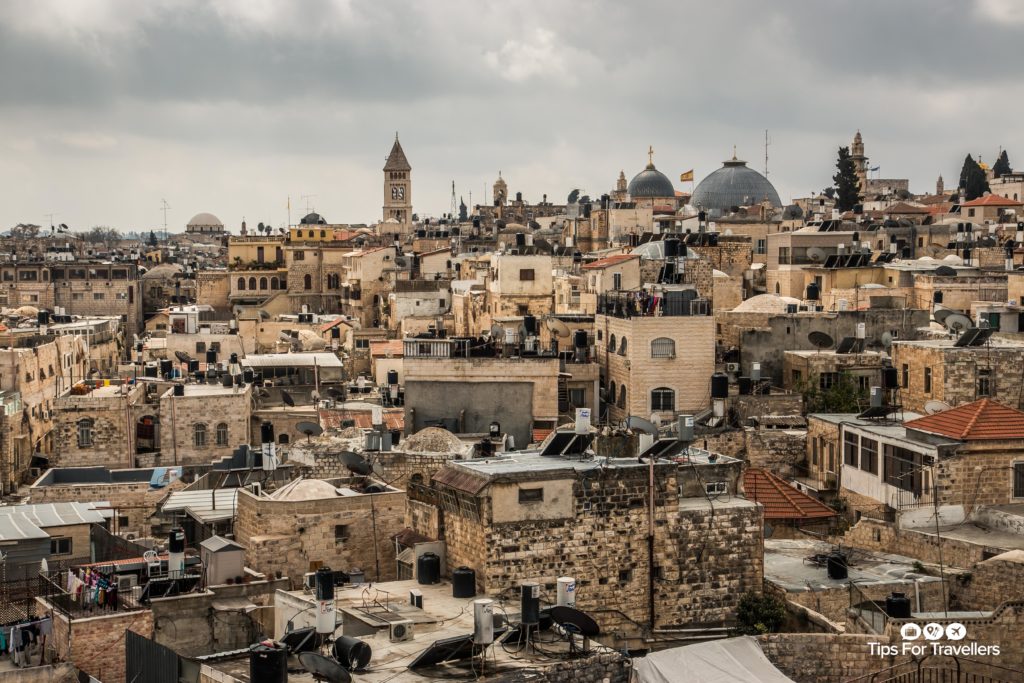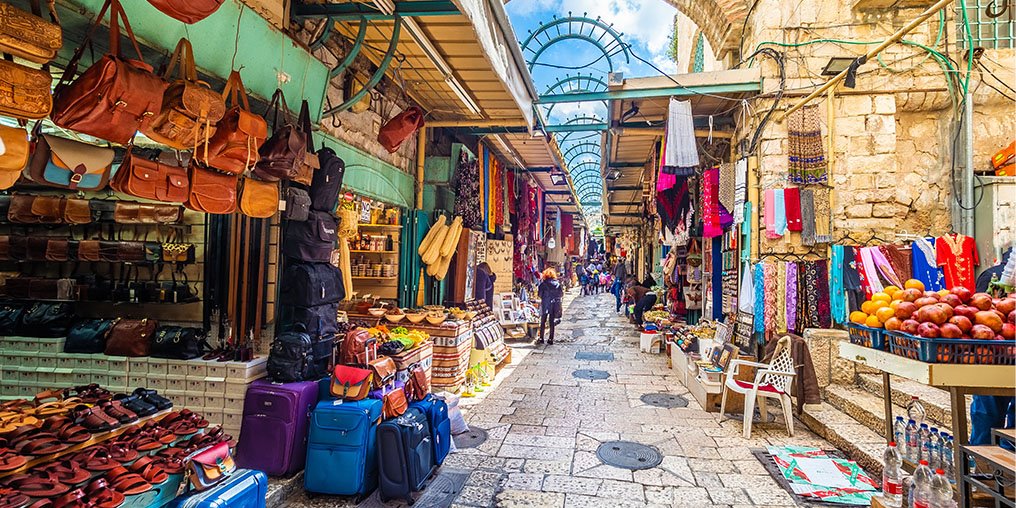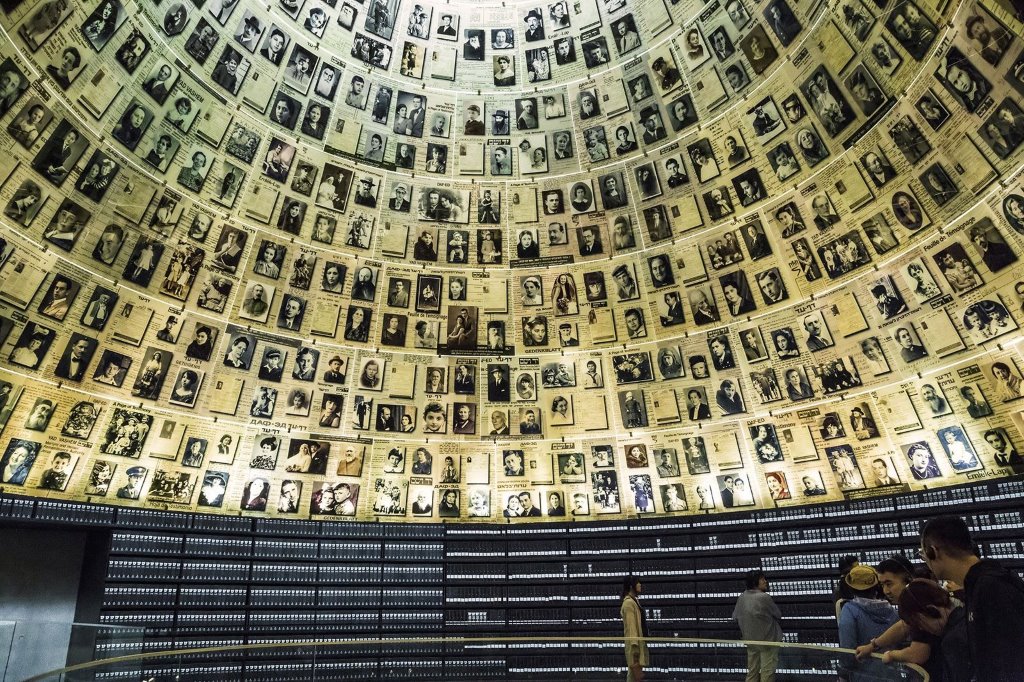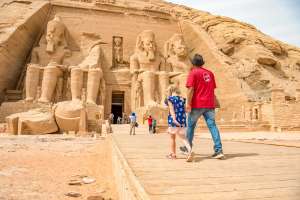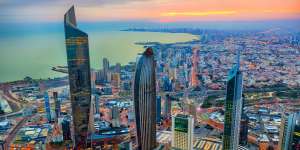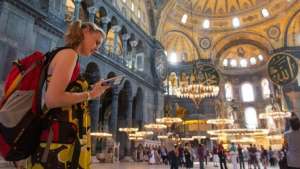Jerusalem is one of those rare places where every step feels layered with meaning. The city rises over rolling hills of stone and olive trees, and the light that settles over its rooftops gives everything a warm, golden glow. Walking through Jerusalem, you feel a mix of calm and intensity at the same time — monks passing through narrow alleys, children running between market stalls, distant church bells, the call to prayer, and the soft hum of conversations in different languages. It’s a city shaped by faith and history, but it’s also very much alive, full of people going about their daily routines, buying bread, meeting friends, and moving through streets that have been walked on for thousands of years.
What makes Jerusalem unforgettable is not only its famous landmarks but the way the old and new sit side by side. One moment you’re standing at an ancient lookout point watching the sun rise over the Old City walls; the next you’re in a lively modern neighborhood filled with cafés, art shops, and street musicians. The air carries the smell of spices, baked pastries, and roasted coffee drifting from busy markets, while quiet courtyards and shaded stone steps offer peaceful places to pause. Every corner seems to open into another story — a hidden garden, a historic church, a viewpoint over the valleys, or a market lane filled with color and noise.
Exploring Jerusalem doesn’t feel like visiting a museum; it feels like walking through layers of time while being surrounded by everyday life. It’s a place where sacred sites, modern culture, food, nature, and human history blend in a way you won’t find anywhere else. The longer you stay, the deeper the city reveals itself, offering small moments and vivid details that stay with you long after you’ve left its hills behind.
Best Places to Visit in Jerusalem
The Old City
The Old City is the heart of Jerusalem — a maze of narrow stone alleys, ancient walls, markets, and some of the most meaningful religious sites in the world. Entering through one of its historic gates, you immediately feel the shift in atmosphere. The streets twist between small shops selling spices, olive wood carvings, textiles, and fresh pastries. Each quarter — Jewish, Muslim, Christian, and Armenian — has its own character, architecture, and rhythm. Walking between them shows how closely different cultures live side by side, with people going to prayer, sharing meals, or preparing for local celebrations. The Old City feels intense and peaceful at the same time, and getting lost here is part of the experience.
Inside the Old City, the Western Wall is one of the most visited places. It’s a place of prayer and reflection, with people leaning against the stones, placing written notes in the cracks, and standing quietly in front of the ancient wall. A short walk away leads to the Church of the Holy Sepulchre, a large complex believed to contain some of Christianity’s most sacred locations. The interior is dim, filled with candles, arches, and chapels built by different Christian traditions. Not far from there lies the Via Dolorosa, a route followed by many pilgrims as they walk through the narrow streets where vendors sell bread, spices, and souvenirs. Each turn seems to reveal another layer of history.
On the eastern side of the Old City, the Dome of the Rock rises above the skyline, with its golden dome shining over the stone walls. The courtyard around the shrine has a calm, open feel, surrounded by arches and shaded areas. Even seeing it from the outside, especially from viewpoints around the city, is unforgettable. Together, these sites create one of the richest cultural areas in the world, making the Old City a place visitors often return to more than once.
Mount of Olives
The Mount of Olives offers one of the most beautiful views of Jerusalem. From the top, the Old City spreads out below, with the golden dome, ancient walls, and rooftops stretching across the hills. The area is filled with historic churches, quiet pathways, and olive trees that create a peaceful atmosphere. Walking down the slope takes you past important landmarks like the Church of All Nations, the Chapel of Dominus Flevit, and the Garden of Gethsemane, where ancient olive trees still grow. The descent is calm and scenic, and the view changes with every step, making this one of the most memorable places to explore.
Mahane Yehuda Market
Mahane Yehuda Market, known simply as “The Shuk,” feels like the beating heart of modern Jerusalem. During the day, the market is full of fresh produce, spices, cheeses, pastries, and small food stalls serving quick, flavorful dishes. Vendors call out their prices, families shop for vegetables and bread, and travelers weave through the lively crowds. You can stop for fresh juice, falafel, baked goods, or plates of hummus served warm and creamy. As evening approaches, the market changes character. Lights come on, music plays, and the area fills with bars and small restaurants as people gather for dinner or drinks. It’s one of the best places to feel the everyday rhythm of the city.
Yad Vashem
Yad Vashem, Israel’s official Holocaust remembrance center, is a deeply moving and powerful place to visit. The museum is thoughtful and carefully designed, guiding visitors through historical exhibits, personal stories, photographs, artifacts, and architecture that encourages reflection. Walking through the halls can be emotional, but it helps you understand an important part of modern Jewish history. Outside, the memorial gardens and quiet open areas offer spaces to sit and absorb the experience. Many travelers consider a visit to Yad Vashem essential for understanding Jerusalem’s contemporary identity.
Ein Karem
Ein Karem is a peaceful, green neighborhood on the outskirts of Jerusalem. It feels like a small village with narrow lanes, stone houses, art galleries, and leafy gardens. Many travelers come here to escape the busy city and enjoy a quieter atmosphere. The area is known for its churches, charming cafés, and hillside views. Walking through Ein Karem often feels dreamy — birdsong, fresh air, and long moments of silence broken only by footsteps on old pathways. It’s a perfect place for slow exploration, good food, and a relaxed afternoon.
Israel Museum
The Israel Museum is one of the most important museums in the region, filled with historical artifacts, modern art, and cultural exhibitions. One of its highlights is the Shrine of the Book, which houses the Dead Sea Scrolls. The archaeology wing is impressive, covering thousands of years of local history, while the art collections include both international pieces and works by modern Israeli artists. The outdoor sculpture garden adds another layer, offering open views of Jerusalem and peaceful pathways between artworks. The museum is large enough to spend several hours exploring, making it a rewarding part of your visit.
Modern Neighborhoods & Everyday Life
Beyond the historic areas, Jerusalem also has modern districts filled with cafés, galleries, and daily activity. Ben Yehuda Street is a lively pedestrian area where people shop, meet friends, or enjoy ice cream and street performances. Emek Refaim Street in the German Colony offers tree-lined sidewalks, restaurants, and a relaxed mix of old houses and modern life. These neighborhoods show a different side of Jerusalem — the everyday routines, the sound of conversations in cafés, and a mix of locals and travelers moving through the city’s quieter corners.
Jerusalem offers an experience unlike any other city, blending ancient history with cultural depth and daily life that continues in its own rhythm. Its neighborhoods, markets, viewpoints, and religious sites create a journey that touches both the past and the present. Moving through the city means discovering details everywhere — the echo of footsteps in old alleys, soft golden light on ancient walls, the scent of spices in the market, and the quiet spaces that appear between busy streets. Whether you explore the Old City, sit on a hillside looking over the rooftops, or wander through lively markets, Jerusalem leaves you with a sense of connection to something larger than a single moment or place.



